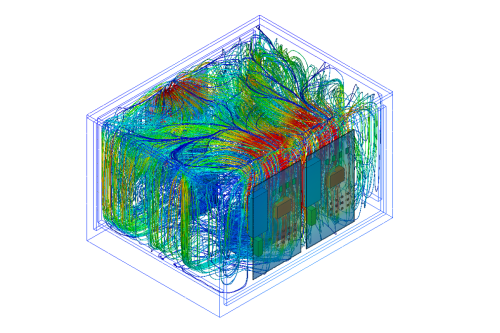Mekanik Tasarım

Isıl Tasarım
Isıl tasarım, ısıl bir sistemin optimum şekilde ve tüm ekonomik ve mühendislik kavramlarını en iyi kullanarak nasıl dizayn edileceğini öğretir. Bu yüzden ısıl sistem dizaynı maliyet analizi gibi çeşitli ekonomik kavramları ısı biliminin termodinamik, ısı transferi, akışkanlar dinamiği gibi tüm temel kavramlarıyla birleştirdiği gibi, mekanik, mukavemet, makine elemanları, sayısal matematik gibi alanları da kapsamak zorundadır. Kısacası mühendisliğin tüm alanlarını kapsayan bir çerçevedir. Modern ısıl dizaynın diğer bir yönü de yoğun bir şekilde bilgisayar modellemelerine dayanmasıdır.
- Isıl Analiz Avantajları
- En temelinde dijital bir test yöntemidir. Parçaları fiziksek olarak üretmeden önce bilgisayar ortamında sanal olarak incelenebilir.
- Olası sorunlar bilgisayar ortamında görüntülendiği için düzenlemeler tasarımda revize edilip sorunsuz tasarım yapma yolunda önemli adımlar atılmış olunur.
- Çeşitli yükleme koşullarında yapısal davranış ve arızanın iyi görselleştirilmesi yapılır.
- Kritik tasarım parametrelerine ilişkin iç görü bilgisi (Ağırlık, Güç, Maliyet) edinilir.
- Daha hızlı ve daha ucuz tasarım döngüsü.
- Ağırlık azaltma, topoloji optimizasyonu, metal ikame malzeme değişimleri çalışmaları sonlu elemanlar yöntemi ile daha hızlı, efektif ve ekonomik yöntemler ile yapılabilir.
© Copyright Copyright © 2025 megart.com.tr Tüm Hakları Saklıdır.
Web Tasarım & Yazılım UX Ajans Yazılım & Medya
Web Tasarım & Yazılım UX Ajans Yazılım & Medya
